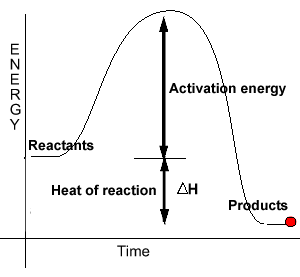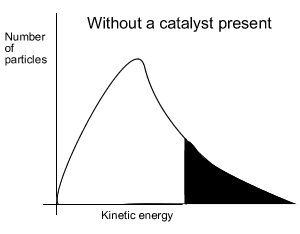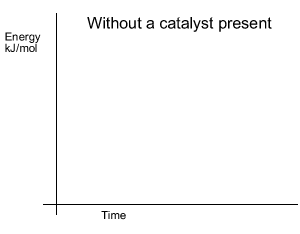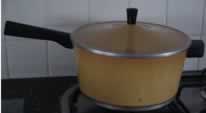Catalysts and activation energy
exercises
On the right is an energy profile of an exothermic reaction in the absence of a catalyst. Discuss the changes that occur to this profile when a catalyst is added.

The diagram on the right shows the distribution of kinetic energies of particles at a given temperature. The shaded area indicates the particles with sufficient energy to break bonds and initiate the reaction. Explain how this diagram changes when a catalyst is added.

Draw the energy profile of an endothermic reaction and explain how the addition of a catalyst changes the energy profile.



Nitrogen reacts with oxygen according to the equation below.
N2(g) + 2O2(g) <=> 2NO2(g)
The reaction is endothermic requiring 63kJ per mol of nitrogen gas. Draw an energy profile on the set of axis on the right. Label products, reactants, change in enthalpy, activation energy.
Give a reason
why the reaction proceeds very slowly at room temperature.
Solution
Give a reason why the reaction proceeds even faster when the catalyst is finely ground.
Hide solution
The activation energy for the reaction is very high. This is due to the fact that it is very difficult to break the triple bond of the nitrogen molecule and the double bond of the oxygen molecule.
